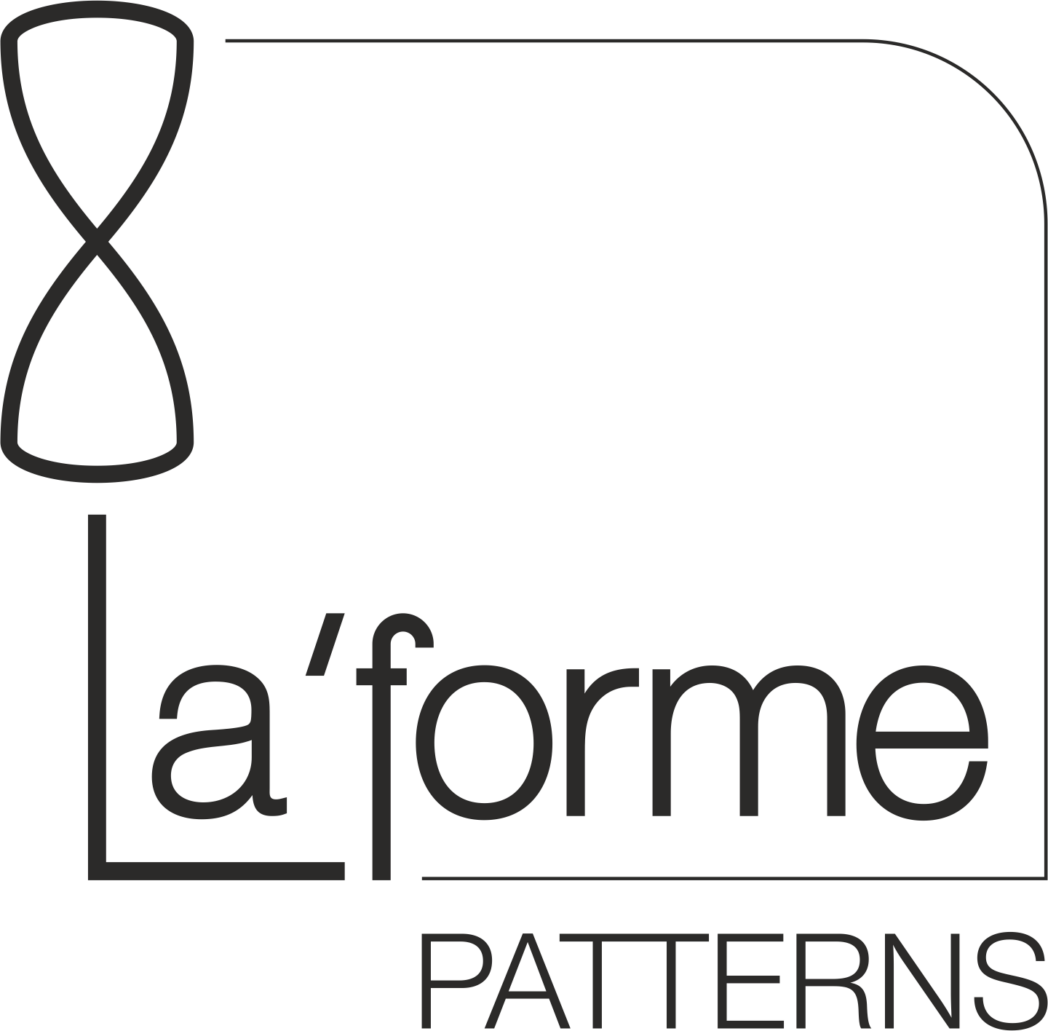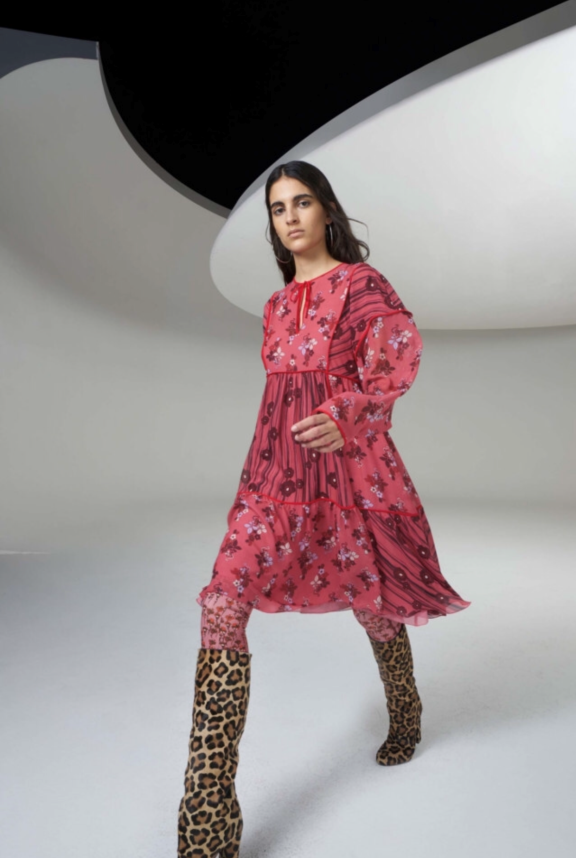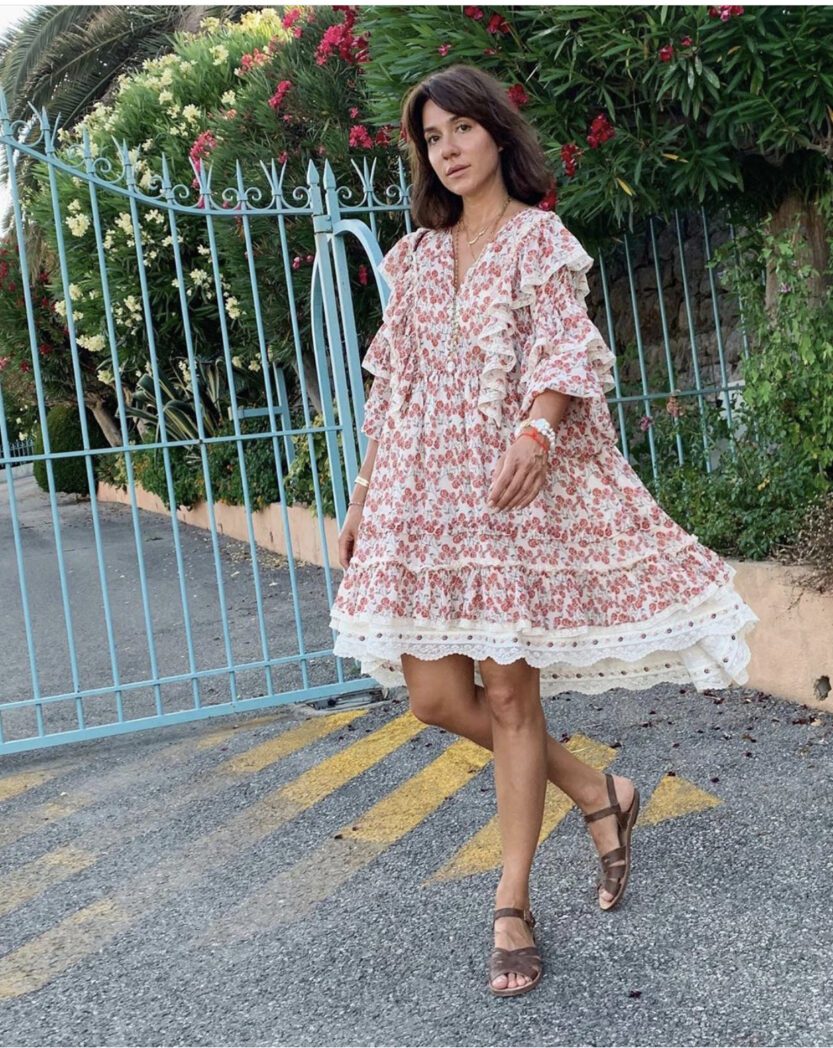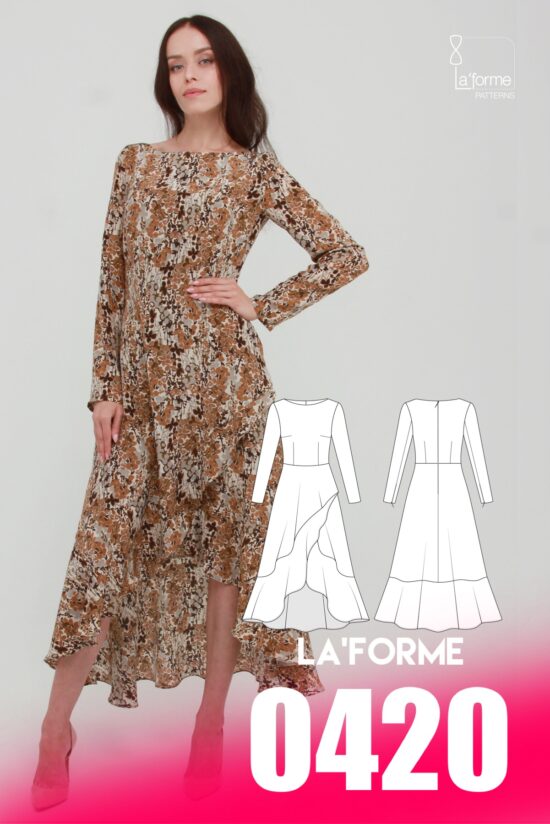Recommended fabrics: thin and ultra-thin blouse and dress materials, chiffon, cambric, and so on. You can sew a dress from any fabric, but in this case, you need to adjust the width of the skirt assembly and the lower tier. Any composition for fabrics.
Table 1 – Fabric consumption * (Russian sizes 40-56, EU 34-50, USA 6-22)
| Height, cm/foot | Main fabric, with width 140 cm, m
With a directional pattern |
If two different companion materials, with width 140 cm, m |
| 158 – 164/
5′ 22″– 5′4″ |
3,00 (40/34/6)
3,30 (48/42/14) 3,50 (56/50/22) |
1,80 (bodice, sleeve, 4 wedges) +2,20 (bodice, 2 wedges, 4 details for bottom) |
| 170 – 176/
5′7″– 5′9″ |
3,20 (40/34/6)
3,50 (48/42/14) 3,70 (56/50/22) |
|
| The table shows the maximum consumption for patterns for chiffon. When changing the amount of the assembly, fabric consumption changes significantly! You can refuse the lower tier and lengthen the wedges of the skirt to save the amount of fabric. | ||
| Additionally:
A bias tape/binding for the neckline can be cut from the main fabric or take finished one 2 meters, Threads for stitching and overlock – 4-5 bobbins. |
||
* – The numbers mentioned in the table are for the extreme sizes in which this model is developed, when selecting materials for the intermediate size, be guided by the average value. An additional supply of materials (for cut accuracy) of not more than 20 cm is already included in the table indicators.
















Reviews
There are no reviews yet.